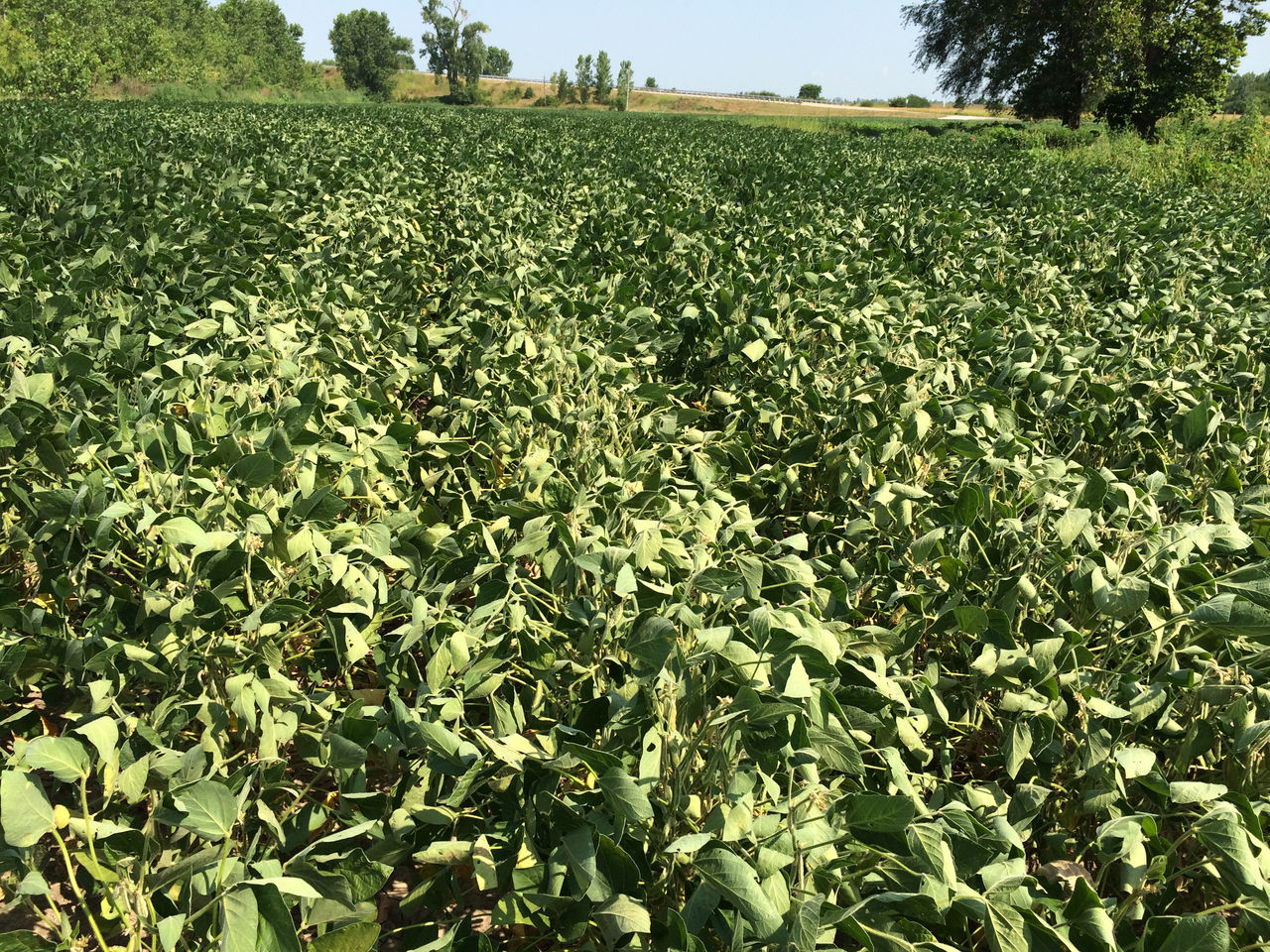Charcoal rot is a fungal disease that can infect more than 500 plant species including soybean. If environmental conditions are favorable for infection, the disease can severely reduce yield potential.
Infection, Characteristics, and Diagnosis:
The disease is caused by the soilborne fungus Macrophomina phaseolina. Generally, plants become infected within 2 to 3 weeks after planting when soils are wet. Unless hot, dry conditions develop, the disease goes dormant. However, seedlings and young plants can show symptoms if environmental conditions are favorable. Typically, the disease flares during reproductive growth stages when temperatures are between 83 and 93° F and soils are dry. The appearance of diseased plants is usually seen initially where soils are the driest or under stress such as compacted end rows and ridges.
Infected plants can have leaves that are small, may be rolled, turn yellow, then wilt, die, and remain attached to the petiole (Figure 1). Diseased plants are likely to mature early with the upper third of the plant having unfilled pods and tiny, black microsclerotia that resemble charcoal powder develop beneath the epidermis on the lower stem, taproot, and pith (Figures 2 and 3). Black streaks may develop in the woody portion of the root crown and lower stems may appear silvery or light gray and have black, dusty microsclerotia (survival structures) on the stem surface (Figure 4).
 Figure 1. Plants showing charcoal rot foliar symptoms.
Figure 1. Plants showing charcoal rot foliar symptoms.
 Figure 2. Infected soybean plant pith exhibits black specks as if charcoal had been rubbed on the tissue.
Figure 2. Infected soybean plant pith exhibits black specks as if charcoal had been rubbed on the tissue.
 Figure 3. Characteristic charcoal rot symptoms when stem epidermis is scraped off.
Figure 3. Characteristic charcoal rot symptoms when stem epidermis is scraped off.
 Figure 4. Outer layer of stem develops black microsclerotia.
Figure 4. Outer layer of stem develops black microsclerotia.
Management:
Soybean products with higher levels of tolerance or resistance should be planted.
To help reduce the potential for plants entering reproductive growth stages during typically high heat months, early maturing soybean products should be planted early.
To help reduce the pathogen population in the soil, a non-host crop should be planted for 1 to 2 years.
Conservation tillage and planting methods to conserve soil moisture should be utilized.
Soil fertility should be maintained, especially phosphorus.1
High seeding rates should be avoided.
If possible, irrigate to help reduce stress.
Sources:
1Giesle, L.J. Charcoal rot. CROPWATCH. University of Nebraska. https://cropwatch.unl.edu/.
Smith, S., Chilvers, M., Dorrance, A., Hughes, T., Mueller, D., Niblack, T., and Wise, K. 2014. Charcoal rot management in the North Central Region. A4037. University of Wisconsin-Extension.
Melvick, D. 2018. Charcoal rot on soybean. University of Minnesota Extension. https://extension.umn.edu/.
Hershman, D.E. 2011. Charcoal rot of soybean. Plant Pathology Fact Sheet. PPFS-AG-S-02. University of Kentucky. http://plantpathology.ca.uky.edu.
6003_S7
